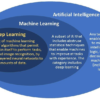Use of Augmented Reality will strongly increase as AR hardware equipment prices are expected to fall very soon
Diana POPESCU is a professor at the University Politehnica of Bucharest, at the Faculty of Industrial Engineering and Robotics. Several years she has been teaching the course of Virtual Reality and Augmented Reality in the master’s program, Management of virtual industrial enterprises and the course on Virtual Reality Systems in the Bachelor program.
How do you characterize Augmented Reality (AR) from the perspective of the Industry 4.0 component?
Augmented Reality, like Virtual Reality (VR) , is a key component of Industry 4.0 and, in general, of any modern digital manufacturing strategy. Currently, AR finds its utility in operator training, maintenance, logistics, or sales, improving the user experience and streamlining the real-time provision of relevant, contextual digital data. This data, which can be text, images, 3D models, video, or sound, is superimposed on the real object, adding a new value.
What are the key skills a student must have to successfully use virtual reality and augmented reality technologies?
VR and AR technologies are not difficult to use, they do not require special technical skills. But creating such applications involves advanced programming skills, interface design, the ability to create and implement relevant technical content, as well as effective ways of user-application interactions. Proper identification of the specific needs of each application in which VR or AR instruments are used also requires engineering and synthesis skills, which are then translated into virtual or mixed environments with specific interactions.
Why Augmented Reality?
AR adds value in many areas, facilitates and streamlines the work of operators. And it is spectacular, attracts users, and thus makes them more productive.
What is the current state of AR?
AR technology is not new at all, but the recent appearance of high-performance equipment (AR glasses) at relatively convenient prices has led to an increase in the number of applications and the interest of companies and technical education institutions. People now have the opportunity to test such applications and objectively assess whether they bring them benefits and, of course, whether the investment is worth it. The number of start-ups in this field has increased dramatically all over the world, which shows both a trend and a great need for training. As in Additive Manufacturing, VR and AR are areas where rigorous theoretical and practical training is required, despite the apparent ease in creating applications.
Can you give examples of software used in creating AR and VR applications?
In the learning process, students use software such as InstaVR, WondaWR, or ZappAR, but also the Vuforia Engine SDK to develop more complex applications. The idea is to provide them with both basic information to properly understand the concepts of AR, VR, and knowledge about the hardware used by these technologies, as well as the possibility of developing practical skills in these areas. These add to the intelligence, creativity, and determination of each student to create something useful and to adapt later to the needs of the workplace.
Who are the target users of AR?
AR technology can and is used in the most varied fields: engineering, education, medicine, art and architecture, tourism, real estate, marketing and sales of games and entertainment, the military field, etc. The advantages of AR can be exploited through the most diverse applications. Wherever it is necessary to provide digital information adapted to the context of a real environment, AR can be a useful and effective response.
What AR hardware equipment is currently used successfully?
Large companies such as Google, Microsoft Apple, Samsung, have developed high-performance products such as Microsoft HoloLens 2, Google Glass Enterprise Edition, etc. Vuzix Blade glasses can also be mentioned here. Raptor AR or Magic Leap One. I estimate that shortly we will have a rich market of hardware devices for AR, and prices will fall a lot.
Can you give some examples of AR applications?
It’s hard for me to choose just a few applications, the variety is extremely wide – anyone who does a little exercise and searches on their phone for the term “augmented reality” will notice this. And it’s just about the tip of the iceberg, that is, commercial applications for the general public.
I quickly think of the PTC or EON Reality applications, as well as the engineering applications developed by the group from the IIR faculty within the various research projects.
Are online courses on e-learning platforms effective for acquiring knowledge about AR?
Online courses in the field of AR are extremely useful in that they provide access to knowledge to a large number of people interested in this subject.




0 Comments